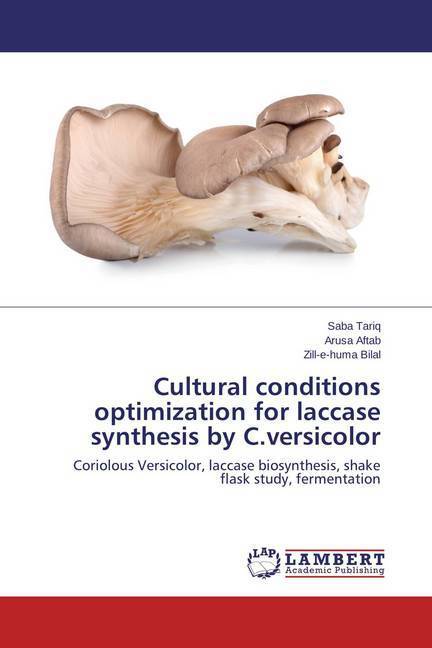
- Afhalen na 1 uur in een winkel met voorraad
- Gratis thuislevering in België vanaf € 30
- Ruim aanbod met 7 miljoen producten
- Afhalen na 1 uur in een winkel met voorraad
- Gratis thuislevering in België vanaf € 30
- Ruim aanbod met 7 miljoen producten
Zoeken
Cultural conditions optimization for laccase synthesis by C.versicolor
Coriolous Versicolor, laccase biosynthesis, shake flask study, fermentation
Saba Tariq, Arusa Aftab, Zill-e-Huma Bilal
Paperback | Engels
€ 39,95
+ 79 punten
Omschrijving
The production of laccase by an indigenous strain of Coriolus versicolor was studied on submerged fermentation. The physical parameters namely, pH, Temperature, Incubation period, Inoculum size were studied for the higher Laccase enzyme production. The optimum pH for the both biomass and laccase production was found to be pH 5.0 which shows the maximum (12.88 U/ml) laccase activity and pH 10.0 shows the minimum (5.86 U/ml) laccase activity. Of the different temperature (15 oC, 20 oC up to 40 oC) tested for the optimal laccase production 25 oC showed the maximum (11.52 U/ml) laccase activity, while 40 oC shows the minimum laccase activity (4.21 U/ml). Among the different incubation period 7 days supported maximum laccase activity (12.78 U/ml) and 10 days shows minimum laccase activity (5.20 U/ml), while four discs (appx. 12mm) supported the maximum activity (11.80 U/ml) and seven discs shows the minimum laccase activity (5.53 U/ml). The above result indicates that the Coriolus versicolor can be used as a biotechnological tool.
Specificaties
Betrokkenen
- Auteur(s):
- Uitgeverij:
Inhoud
- Aantal bladzijden:
- 64
- Taal:
- Engels
Eigenschappen
- Productcode (EAN):
- 9783659574542
- Verschijningsdatum:
- 22/05/2015
- Uitvoering:
- Paperback
- Afmetingen:
- 150 mm x 220 mm
- Gewicht:
- 104 g

Alleen bij Standaard Boekhandel
+ 79 punten op je klantenkaart van Standaard Boekhandel
Beoordelingen
We publiceren alleen reviews die voldoen aan de voorwaarden voor reviews. Bekijk onze voorwaarden voor reviews.








